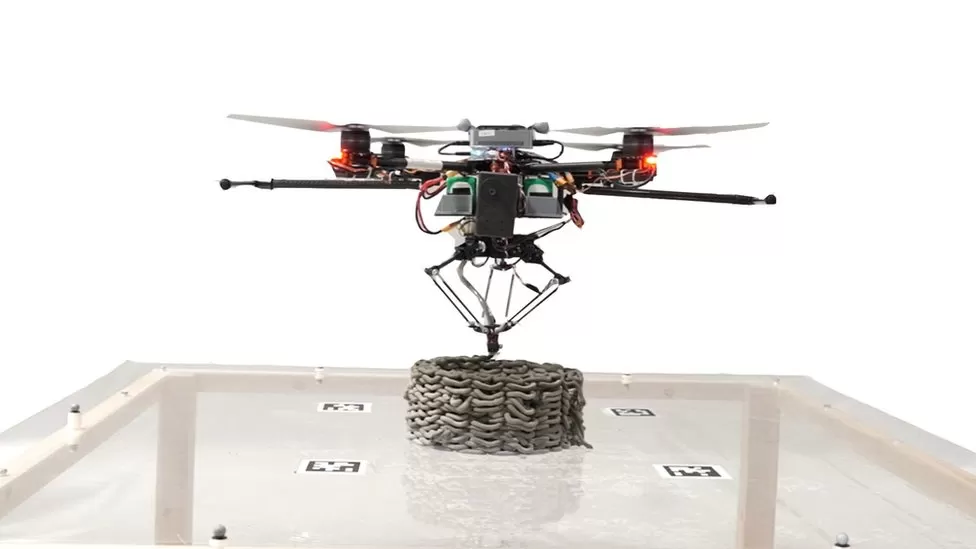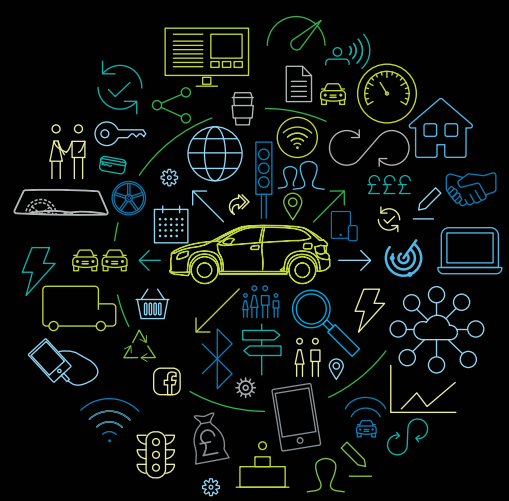
My drones brings all the prints to the yard
Recently a team of researchers has proven that a team of autonomous drones can work independently to print ánd build (!) (BBC, 2022). Materials needed for the construction or reparation of buildings. These drones, called the Aerial Additive Manufacturing (Aerial-AM), are fully autonomous and use a blueprint as the basis of their 3D printing process. This foundation lets the drones know exactly what to print, where to go, and how to place the printed materials. They would then essentially operate just like bees where each individual drone has a specific purpose and role within the project, but unlike bees the drones are flexible and could change tasks on the fly. The drones have been tested in the laboratory under controlled conditions, where they could manufacture accurately within “five millimeters”. The printing was done using mixes of four types of cement. The researchers explain that further research is needed in collaboration with construction companies and practical use cases to test the drones capabilities in more realistic settings.
Look! Up in the sky! It’s a bird! It’s a plane!
I think the advent of drones capable of 3D printing construction materials can be of tremendous benefit. Drones would be able to reach hard to reach places which could be dangerous as well, not just because of the place’s location, but also weather conditions, for example. A drone is not at risk of slipping and falling of a 500 meters building. Less human labor is needed which will reduce bodily harm from physical labor, costs will probably decrease and revenues probably increase because projects have less downtime while also greater efficiency because drones know exactly what to do based on the blueprints. However, human expertise is still crucial, because they need to give inputs to the drone and make sure the drones do an actual good job.
Source
BBC. (2022, September). Flying 3D printer drones work like bees to fix buildings. Retrieved from bbc: https://www.bbc.com/news/uk-england-bristol-62993125


